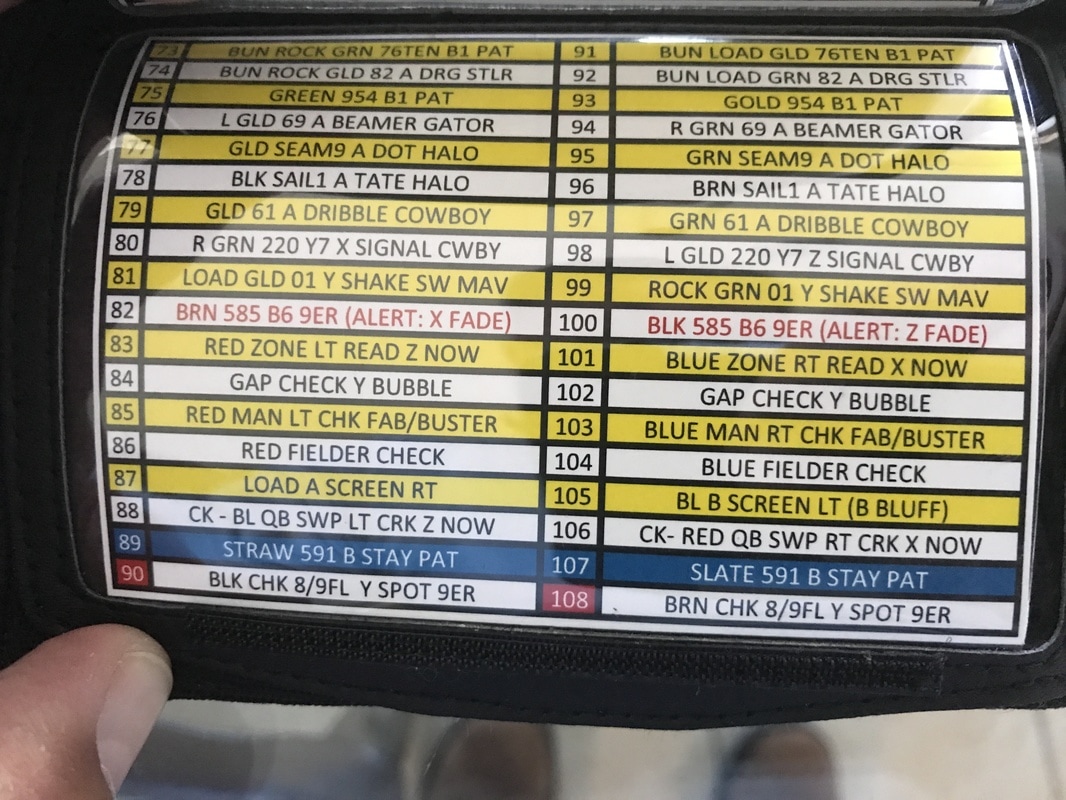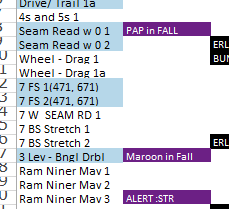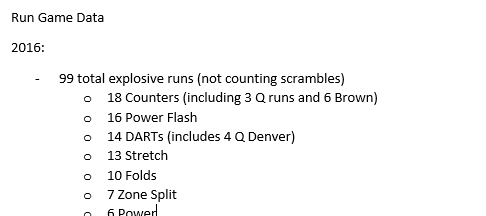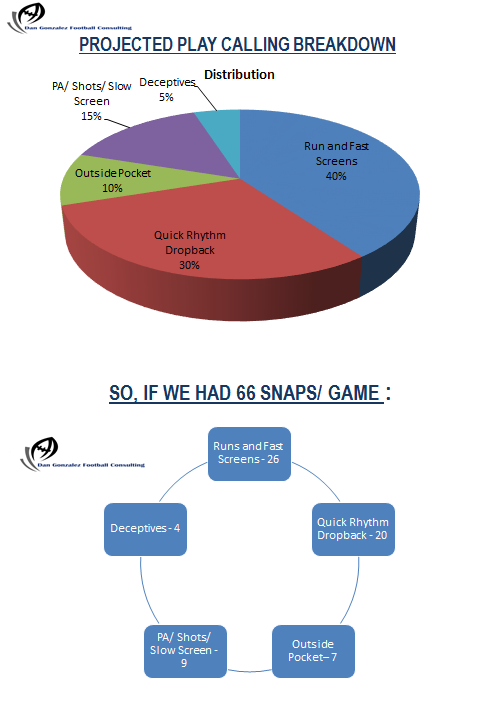|
The discussion came up with a coach in which a coach voiced his staunch belief that he would not have 5 man protections in the Scoring Zone. The reasoning given was pressure. While this aligns with "traditional" football thinking, it does not maximize the potential of the offense. The argument can be made that one must have these facets (5 man protection and empty sets vs pressure) in order to truly dictate to the defense. One of the keys for us is the pictures we create and keys we coach for the QB. The route stems we put around our advantage routes provide consistent pictures, and we give directions on every play that allow for quick decisions. How one plans is, of course, critical, but the point must be made that matchups cannot be ignored. Here, the supposed "vertical space" lost as one approaches the end zone is gained by attacking a slower player with more lateral space: Also, "ALERT" packages are built in to give the most advantageous situations: Alerts are neither tie consuming nor difficult. In fact, they save time, because one can practice vs. very specific looks. Because of ACTS and our system of play calling, my 6th grader literally has it as part of his plan (Plays 82 and 100): Additional protectors DO NOT necessarily assure the passer more time, because a well-coached defense can always get 1on1 pass rush matchups. Here, the illustration is made of the 6th protector having little effect, but the QB anticipating and defeating the rush, despite not being the Advantage Route in his progression: The result: more space in more situations for your players. Ever watch a player being asked to cover or tackle a player they know they don't physically match up with? Here is how a pressure defense responds, when there is no longer the certainty of how they will be attacked:
0 Comments
As high schools are making the last push towards summer break, football coaches are often drawn back from the mindset of the off-season to the serious planning stages for the season. One of the major benefits of the method we use is that we keep the number of "active" calls to what is practicable. It does, however, require discipline, as additions must be accompanied by taking something off of the active list and back into the ready list. Moreover, even the same ideas (in this instance, a pass pattern) will be presented differently in the fall than in the spring. Below, notes for the fall are seen highlighted in purple. We can see that the first note reminds the coach that a play action element will be included, while the second note clarifies the desire for a 7 man protection. Being a 3-Level structure necessitates this answer for zone blitzes that might be prevalent on long-yardage situations. The last notation in the above image refers to what I call an "ALERT" - predetermined packages that allow for very specialized concepts. If the look we get isn't what we want, we simply call "Alert" to change the entire call. Further, each pass call is evaluated, based on effectiveness vs. basic coverage categories (below). A coach can then glean the worth of a given play in relation to its versatility. For example, a pass that is effective vs only man coverages might have a very specific situational need, or not at all. The staff must then decide Understanding value is not only a key principle in the business world; it is critical in football as well. Below is a partial picture of a report done on one of our clients in 2016. Studying data is essential in not only saying "this is what we are good at" -- it also allows to guide teaching, installation, and the subsequent direction of the offense -- despite continuity of the system as a whole. In the example below, it was derived that diversification in the schemes taught was not an issue; rather, the teaching in what many consider to be "ZONE" schemes could be adapted to mimic the "GAP" teaching. Variations could be acquired by simple tags, rather than new ideas. Systems are to have answers to all problems that opponents can present; it is critical not to have only sound play concepts, but have teaching emphasis that aligns with game time distribution as well. Below is an example of a play distribution model we began in 2012 (and published in Recoded and Reloaded in 2013), based on an average of 66 plays per game: Though the flow of each game cannot be predicted, the situations of each can be practiced and packaged. And while the rest of the world begins to relax for the summer, football coaches are studying themselves harder than ever.
|
AuthorLiving in Allen, TX and using this outlet to not only stay close to the game I love, but to help pass on what I have learned from some of the game's great coaching minds. Categories
All
Archives
July 2021
|

|
|






 RSS Feed
RSS Feed
